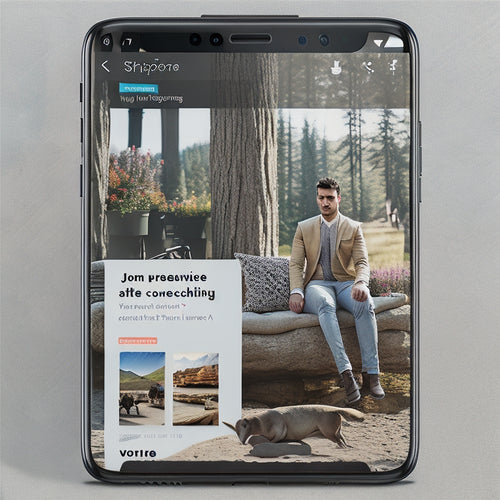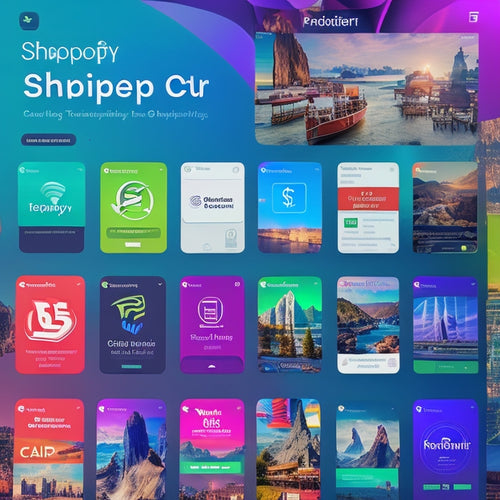
Transform Your Business With Online Courses
Share
You're already sitting on a potential goldmine of knowledge and expertise that can be repurposed into online courses, allowing you to diversify your revenue streams, increase brand awareness, and establish your authority in the industry. To get started, you'll need to identify your target audience and craft compelling course content that's both informative and entertaining. Next, build engaging learning experiences that bring your content to life, and create an effective course structure that guides learners through your content. Finally, measure your course's success with metrics like completion rates and Net Promoter Scores. Now, take the next step in transforming your business...
Key Takeaways
• Identify your target audience to create courses that cater to their specific needs and interests, increasing engagement and retention.
• Develop compelling course content that informs, entertains, and tells a story, incorporating interactive activities to boost learner participation.
• Structure your course to guide learners through a clear roadmap, breaking down content into modules and lessons with clear objectives.
• Measure course success through metrics like completion rates, engagement rates, and Net Promoter Scores to refine and improve your courses.
• Create immersive learning experiences that bring content to life, using visual storytelling and interactive activities to transform your business through online courses.
Identifying Your Target Audience
Identifying your ideal customer is essential, as it sets the stage for creating online courses that resonate with them and ultimately drive business growth. You can't create a course that appeals to everyone, so you need to focus on a specific audience.
To do this, you'll need to conduct an audience analysis, which involves gathering data about your potential customers. This will help you develop a marketing strategy that targets the right people.
Start by creating customer personas, which are fictional representations of your ideal customers. Give them names, ages, occupations, and interests. Then, conduct demographic research to gather more information about your target audience.
What're their pain points? What motivates them? What're their goals? By understanding your audience, you can create online courses that speak directly to their needs, increasing the chances of success.
Crafting Compelling Course Content
As you explore creating your online course, crafting compelling content that resonates with your target audience is essential, as it's the backbone of a successful and engaging learning experience. You need to create content that's both informative and entertaining, making your learners feel invested in the material.
To achieve this, focus on developing a narrative that weaves together key concepts and ideas. Use visual storytelling techniques such as videos, images, and infographics to break up text and make your content more engaging.
Incorporate interactive activities that encourage learners to participate and apply what they've learned. This could include quizzes, discussions, and hands-on exercises that help learners develop new skills. Make sure your content is concise, clear, and free of jargon, ensuring that your learners can easily understand and absorb the information.
Building Engaging Learning Experiences
You've crafted compelling course content, now it's time to bring it to life by building an engaging learning experience that immerses your learners in the material.
To do this, incorporate interactive activities that encourage learners to apply what they've learned. This could include quizzes, gamification, or real-world scenarios that challenge them to think critically. Engaging assessments not only test learners' knowledge but also provide valuable insights into their progress.
Visual storytelling is another key element in building an immersive learning experience. Use high-quality images, videos, or animations to convey complex concepts in an easy-to-understand format. Interactive modules that allow learners to explore and interact with the content can also increase engagement and retention rates.
By incorporating these elements, you'll create a learning experience that's both enjoyable and effective. Remember, the goal is to make your learners feel like they're an active part of the learning process, not just passive recipients of information.
Creating Effective Course Structure
Crafting a logical and intuitive course structure is essential to guiding learners through your content and making sure they absorb the information in a meaningful way. You want to create a clear roadmap that takes learners on a journey from start to finish, with each lesson building upon the previous one. Effective lesson planning is key to achieving this.
Break down your course into modules, and then further into individual lessons that focus on specific topics. Make certain each lesson has a clear objective, and that learners know what they'll achieve by the end of it.
To boost student engagement, incorporate interactive elements, such as quizzes, discussions, and hands-on activities. This will keep learners engaged and motivated throughout the course. Consider using real-life examples or case studies to illustrate key concepts, making the learning experience more relatable and applicable.
Measuring Course Success Metrics
Now that you've structured your course for maximum engagement, it's time to define the metrics that will measure its success. To guarantee your online course is meeting its goals, you need to track progress and analyze data to identify areas for improvement.
Here are some key metrics to focus on:
| Metric | Description |
|---|---|
| Completion Rate | The percentage of students who complete the course |
| Engagement Rate | The percentage of students who actively participate in the course |
| Net Promoter Score (NPS) | A measure of student satisfaction and loyalty |
Frequently Asked Questions
How Do I Protect My Course Content From Being Stolen or Copied?
To safeguard your intellectual property, you're taking the right step by wondering how to protect your course content from being stolen or copied. You can do this by using copyright protection, watermarking, plagiarism detection, and encryption to guarantee your work remains yours.
Can I Use Existing Content, Like Blog Posts, in My Online Course?
You can breathe new life into existing blog posts by repurposing them into course content, but be cautious of plagiarism risks and guarantee copyright protection to maintain content security and credibility.
Do I Need to Be a Subject Matter Expert to Create a Course?
You don't need to be a world-renowned expert to create a course - just a passion for sharing knowledge! With course creation, expertise is relative; what matters is your unique perspective and creativity in crafting engaging online courses that resonate with your audience.
How Long Does It Typically Take to Create a High-Quality Online Course?
'You're wondering how long it takes to create a high-quality online course. Typically, it takes 3-6 months to develop a thorough course that meets quality standards, depending on your expertise and the course's complexity.'
Can I Sell My Online Course on Platforms Other Than My Website?
You're worried about being locked into one platform? Don't be! You can sell your online course on third-party platforms like Udemy or Teachable, and even leverage their marketing strategies to reach a broader audience.
Related Posts
-
Shopify SEO Checklist: Beginner Guide Into Ecommerce SEO
This article provides a beginner's guide to Shopify SEO, focusing on the ecommerce aspect. It outlines the benefits ...
-

What Is a Search and Discovery App in Shopify
This article aims to provide a comprehensive understanding of the concept of a search and discovery app in the conte...
-

Unlocking Revenue Potential: Join the Shopify App Store Revenue Share Plan
The Shopify App Store has implemented a new revenue share plan for its partners, aimed at unlocking their revenue po...

